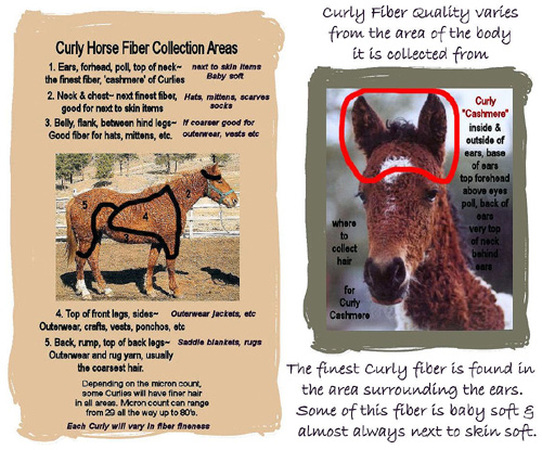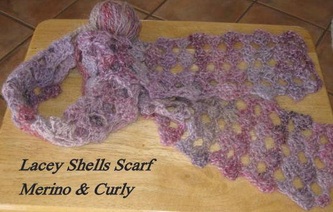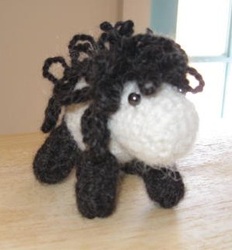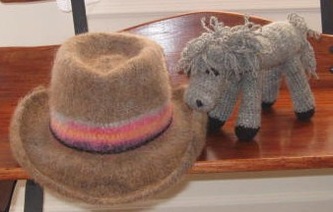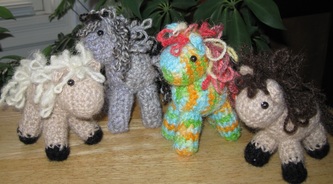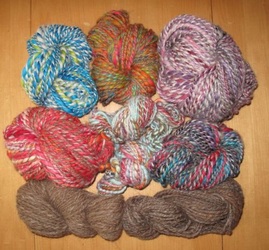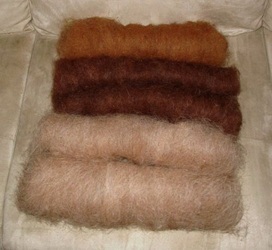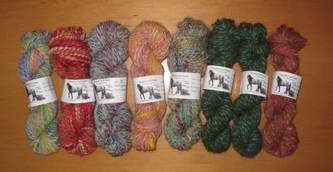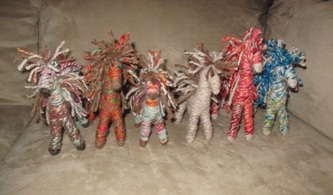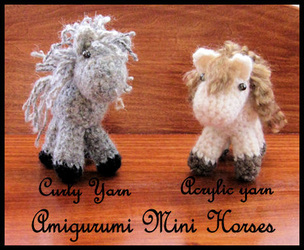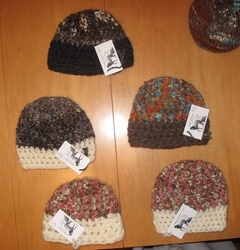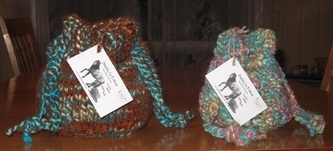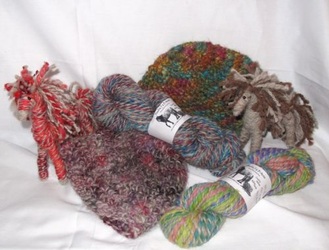Curly Fiber Guild
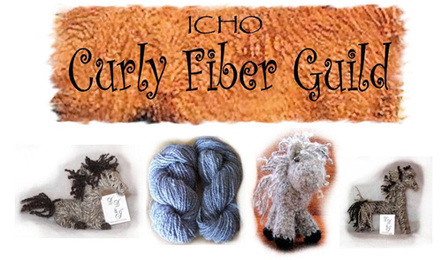
The Curly Fiber Guild is a group of fiber artists that work with Curly horse fiber.
Spinning, felting, crocheting, knitting, weaving, and craft items are some of the things our fiber artists create
with Curly Horse Fiber.
The hair fiber the horses shed in spring is categorized by softness.
Then it is blended with other fibers like wool, alpaca, llama & mohair
To be spun into yarn or felted and used to make many unique items.
We strive to have Curly fiber items available for owners to display
At horse fairs and expos. The following artists will have various
crafts available for purchase.
Tracy Dalke, PO box 176, Charlo, MT 59824
Curly fiber [email protected]
Bunny Reveglia, 322 Tulie Gate Rd, Tularosa, NM 88352
Spinning, Curly yarn, crochet items, Curly blend fiber batts
[email protected]
Jenn's Fiber Page
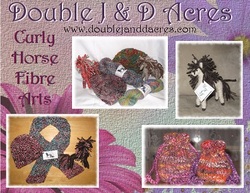
Click photo to see Jenn's Curly Fiber Art
Jenn Scharf, past projects, no longer spinning
http://doublejanddacres.com/fibre_sales
[email protected]
Jenn Scharf, past projects, no longer spinning
http://doublejanddacres.com/fibre_sales
[email protected]
Collecting Curly Fiber
When collecting your Curly fiber, always collect the softest areas first. The base of the ears area is the softest and considered the "cashmere" of Curly fiber.
The second softest area is the chest and between front legs. Depending on the Curly this will be softer than the neck hair, but some Curlies will have soft neck hair as well. Label each baggie with your horses name and area collected. The base of ears will give about a snack baggie full. The chest area will give about a quart sized baggie and the neck area can give about a gallon sized baggie full.
Foal coats are the best fiber a Curly will ever have and they prized by spinners as they are usually very soft. Always collect foal coats and label them and seal in plastic bags to keep moths out. Moths will ruin fiber.
When collecting your Curly fiber use the cleanest areas to collect. Hair should free of debri, mud, manure, hay, wood chips, sticks etc. Only collect your cleanest fiber because this is the fiber that hand spinners are interested in. They also like the finest fibers best.
Curly is considered an exotic fiber and there is always a demand for it, because it is truly unique!
The second softest area is the chest and between front legs. Depending on the Curly this will be softer than the neck hair, but some Curlies will have soft neck hair as well. Label each baggie with your horses name and area collected. The base of ears will give about a snack baggie full. The chest area will give about a quart sized baggie and the neck area can give about a gallon sized baggie full.
Foal coats are the best fiber a Curly will ever have and they prized by spinners as they are usually very soft. Always collect foal coats and label them and seal in plastic bags to keep moths out. Moths will ruin fiber.
When collecting your Curly fiber use the cleanest areas to collect. Hair should free of debri, mud, manure, hay, wood chips, sticks etc. Only collect your cleanest fiber because this is the fiber that hand spinners are interested in. They also like the finest fibers best.
Curly is considered an exotic fiber and there is always a demand for it, because it is truly unique!
How to work with Curly Fiber Videos by Jenn Scharf
Downloads for Curly Fiber flyers
| curly_fibercollection.pdf | |
| File Size: | 168 kb |
| File Type: | |
| workingwithcurlyfiber.pdf | |
| File Size: | 94 kb |
| File Type: | |
| brw_flier.pdf | |
| File Size: | 155 kb |
| File Type: | |
